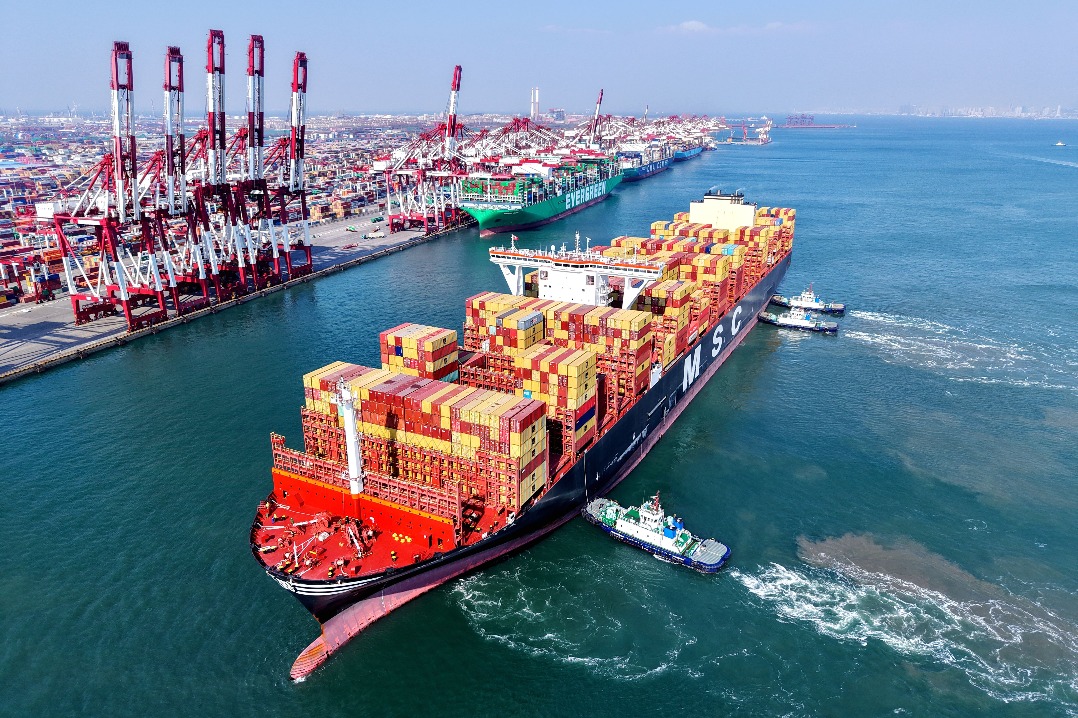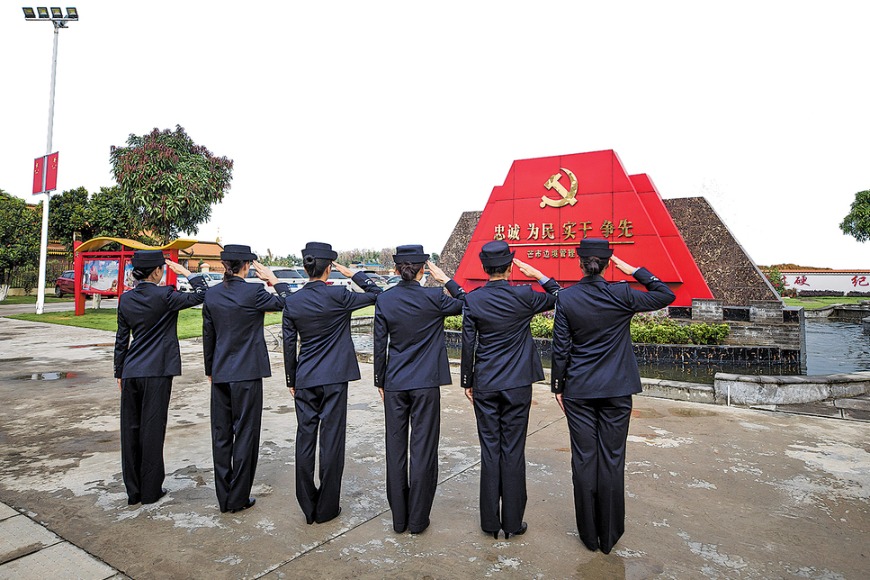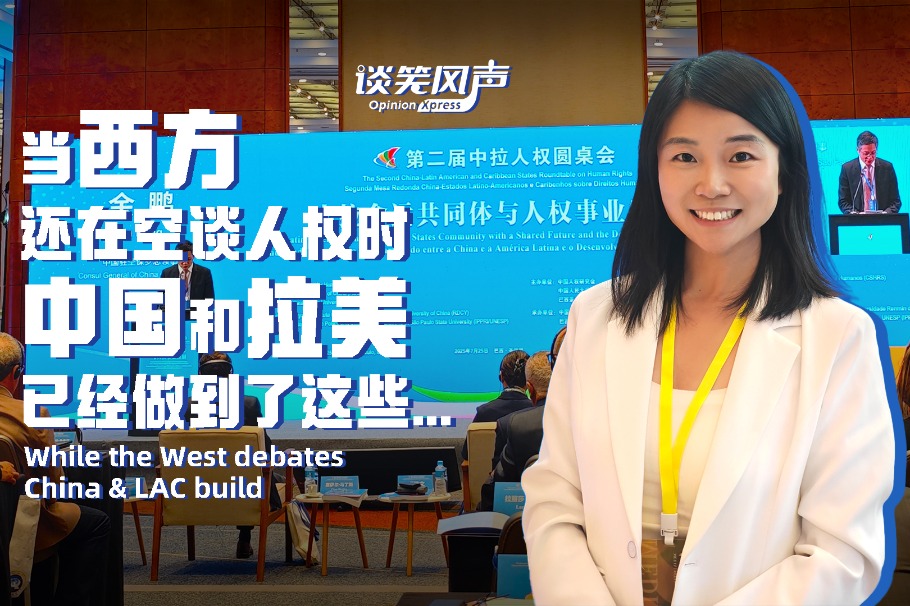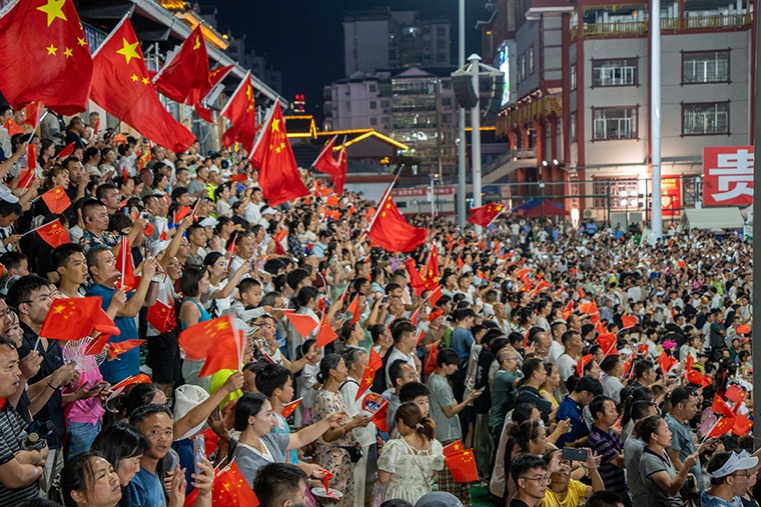Strategic adaptation


WU WANQIAN/FOR CHINA DAILY
Economic diversification is an affirmative choice of the developing countries to engage with the world on more equitable and resilient terms
In economics, one principle remains constant: diversification outperforms concentration, especially in uncertain times. The Global South has learned this lesson through experience — this is why new cooperative arrangements among developing nations are increasingly shaping the global economic landscape.
The COVID-19 pandemic made this painfully clear. Countries heavily reliant on Western supply chains struggled to secure vaccines, medical supplies and essential goods. When the United States and its allies imposed financial sanctions on Russia via the dollar-based payment system, many countries, which are not party to the conflict, experienced indirect disruptions to international payments — particularly those trading in food, energy or fertilizers. Similarly, Europe's energy crisis from 2021 disrupted export revenues for African nations dependent on European demand. In every case, the message was the same: economic over-reliance leads to systemic vulnerability.
In response, countries of the Global South are actively diversifying their economic and diplomatic partnerships to mitigate risks and strengthen resilience. Thailand, for example, engages through the Association of Southeast Asian Nations for regional trade, participates in BRICS+ for alternative financing, and maintains bilateral relationships with a wide range of partners. Brazil is active in BRICS+, the Community of Latin American and Caribbean States, and Mercosur (the Southern Common Market), while also deepening ties across Africa and Asia. This is not disjointed policymaking — it is strategic adaptation to global realities.
Diversification brings leverage. When a country can choose Chinese infrastructure financing, Japanese technology cooperation and European development assistance, it is not dependent on one provider for everything. Competing partners must offer better terms. When African countries can export to China, India, Brazil and the European Union, they are no longer dependent on a single market. Greater choice translates into greater autonomy.
This dynamic encourages imitation. Countries that embrace diversification experience stronger growth and greater resilience to global shocks, so others take notice. Vietnam expanded its regional and global partnerships after seeing Thailand's model succeed. African nations have increasingly applied competitive bidding to secure favorable terms from development partners. The diversification model is spreading horizontally across the Global South not because of ideology, but because it works.
Technology accelerates this trend. Digital payment systems, mobile banking and blockchain networks are enabling countries to bypass traditional financial intermediaries. China's Belt and Road Initiative has enhanced physical connectivity, linking Global South economies directly to one another. India's digital platforms have spread across Southeast Asia, demonstrating how locally adapted solutions can scale independently of legacy systems. As technology reduces the cost of managing multiple partnerships, the incentives to diversify increase.
Traditional powers once maintained influence by being the only viable option. But when alternatives multiply, overdependence becomes economically irrational. No country chooses vulnerability when affordable and effective alternatives exist. With lower switching costs and more partners, the case for diversification becomes self-reinforcing.
Some critics argue that managing many partnerships increases coordination costs. However, these costs are relatively fixed, while the benefits of diversification grow over time. A country that manages five development partners may face initial complexity, but if those partners compete to offer favorable terms, the overall gains quickly outweigh the administrative effort. Countries that have adopted this approach consistently report net positive returns in both economic and diplomatic terms.
This shift is not easily reversed. After experiencing the flexibility and benefits of diversified engagement, countries are unlikely to return to dependency on a single partner. The economic rationale is simply too strong. For instance, would Thailand willingly return to relying primarily on Western markets? Would African countries go back to accepting terms from one dominant buyer after learning how to negotiate among multiple partners? The answer is increasingly clear.
This trend presents a strategic challenge for traditional powers. If they improve their offers to retain influence, they effectively validate the diversification strategy and encourage broader adoption. If they do not compete, they risk losing relevance. Either way, the momentum continues to shift toward multipolar cooperation.
Importantly, this transformation is not about confrontation. It is not aimed at replacing one dominant bloc with another. Rather, it reflects a desire by developing countries to pursue their own development goals while remaining open to global integration. China's role illustrates this approach. Through infrastructure, technology and financial partnerships, China facilitates rather than dictates — emphasizing mutual respect and practical collaboration.
We can already see this new architecture emerging. The Regional Comprehensive Economic Partnership now covers nearly one-third of the global GDP. BRICS+represents over 40 percent of the world's population. Intra-African trade is growing faster than trade with any other region. These are not abstract declarations. They are functioning frameworks with tangible impact.
Policymakers who understand this shift are positioning their countries to benefit from it. By engaging across multiple platforms, they increase strategic flexibility, reduce external risks and open up new avenues for growth. Business leaders are also adapting, restructuring supply chains and exploring markets across Asia, Africa and Latin America. Those who fail to adjust may find themselves constrained by outdated assumptions about globalization.
What is emerging is not a fragmented world, but a more balanced one. A world in which no single country or region can unilaterally set the rules. Instead, developing countries are asserting their right to help shape global outcomes on equal terms. This shift is not about ideology — it is the practical result of economic logic in an interconnected world.
South-South cooperation is not a temporary response to crisis. It is an enduring adjustment to new realities — driven by necessity, supported by innovation and guided by the pursuit of long-term development. In this sense, economic diversification is not just a defensive strategy. It is an affirmative choice to engage with the world on more equitable and resilient terms.
The age of dependence is giving way to an era of shared agency. Countries that embrace flexibility, autonomy and cooperation will lead the way. And as the Global South continues to diversify, it is not only adapting to the world — it is helping to shape its future.
The author is an associate professor of economics and director of the Center for ASEAN Economic Research and Center for ASEAN Studies at Chiang Mai University, Thailand. The author contributed this article to China Watch, a think tank powered by China Daily.
Contact the editor at editor@chinawatch.cn.

































